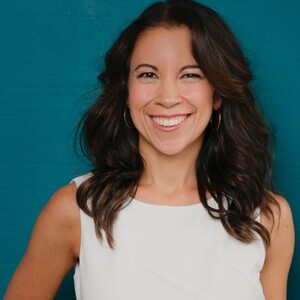Embracing a New Paradigm of Women’s Leadership


In the landscape of leadership today, there are still far fewer women at the senior levels than men—and it's not necessarily getting better.
At From Day One’s May virtual conference, LeeAnn Mallorie, founder and CEO of Guts and Grace Leadership, spoke about a new paradigm of women's leadership, coaching, and training. “Since the pandemic, things may have gotten worse in certain industries and certain organizations. We know that there’s a gap. Sometimes it’s called the leadership cliff, meaning when you get to a certain level, it starts to be harder to get promoted,” Mallorie said.
The business world continues to rapidly change, many women left the workforce during the pandemic, and this disruptive period can put diverse leaders at risk. Fortunately, it is also an excellent time for opportunities and advancement for these leaders. If we think about the old paradigm of leadership, where things were only done a certain way, this current level of disruption can also open the door for a different type of thinking. Mallorie says that with a new paradigm, we can bring ourselves to lead in a more holistic and resilient way.
Mallorie says that women in leadership roles have fueled transformation during a volatile time. Research has also shown that feminine leadership embodies qualities that have been incredibly useful in times of change. Emotional intelligence, active listening, collaboration, creativity, and imagination shine through when women are fully activated in leadership positions.
So then the question becomes, what makes the difference?

There’s a new paradigm of success in which women can be fully activated in the workplace, according to Mallorie. Per her 20 years of experience, when people are fully activated, they're more centered. “They’re feeling cared for in their 30s. They're the ones driving the innovation. Perhaps they’re building culture and leading visionary teams.”
Under pressure, we often find ourselves in a different mode. Mallorie calls this an “old paradigm success model” where the internal dialogue sounds like, ‘I have to perform, and when I get there, things will be a certain way.’ With this mindset, women begin to plateau amidst all the pressure. There can also be a lot of resentment or burnout. During times like these, it’s important to look deeper and process how one can find their way through this state, says Mallorie.
Effective coaching and training should focus on various things in order for women to move from surviving to thriving. First is advancing technical skills, like learning how to negotiate or get better at a tactical part of one’s job. The second is remaining conscious of bias.
Mallorie discusses a third ingredient to help change the game: leading with grace. “We refer to embodiment, focusing on the self, working toward wholeness, working at the identity level,” Mallorie said. It’s about understanding other people’s traumas and motivations as well.
“During the early career survival strategies, what’s getting in the way might be the baggage [like internalized oppression] that one is carrying,” she said. “I will often talk about dismantling the patriarchy within. As women in leadership, there's often something we’re carrying or performing to, or that has just become part of our DNA and trying to get into these types of workplaces. And when that’s not addressed, we don’t fully solve the problem.”
There are four domains that leaders can focus on when coaching others, says Mallorie. These include, embody, empower, activate, and inspire. As an embodied leader, you must use your body, energy, and time in ways that serve yourself and others well. An empowered leader has a positive mindset, and she navigates her emotions effectively under pressure. An activated leader acts with integrity and purpose and takes healthy risks to serve her organization. An inspired leader shares her vision and naturally inspires others to follow her lead.
By embracing a new paradigm of leadership that harnesses feminine strength rather than going against it and suppressing natural qualities in favor of patriarchal standards, we may find a new brand of leadership and new ways of working that can bring more growth and success.
Editor’s note: From Day One thanks our partner, Guts and Grace Leadership, for sponsoring this thought leadership spotlight.
Keren's love for words saw her transition from a corporate employee into a freelance writer during the pandemic. When she is not at her desk whipping up compelling narratives and sipping on endless cups of coffee, you can find her curled up with a book, playing with her dog, or pottering about in the garden.
The From Day One Newsletter is a monthly roundup of articles, features, and editorials on innovative ways for companies to forge stronger relationships with their employees, customers, and communities.